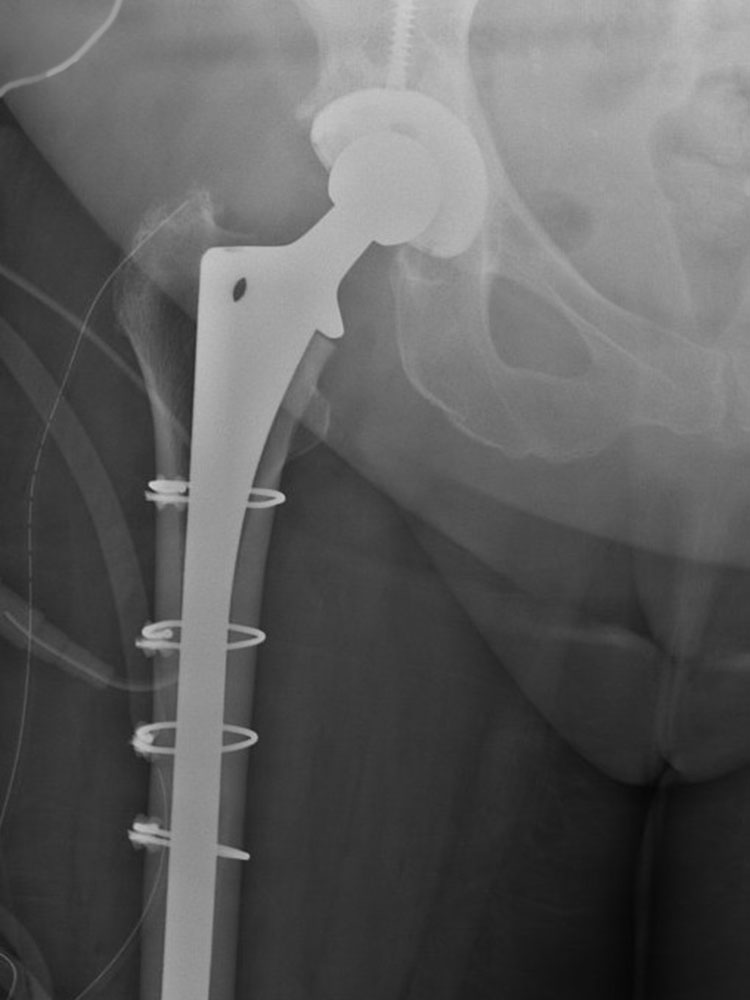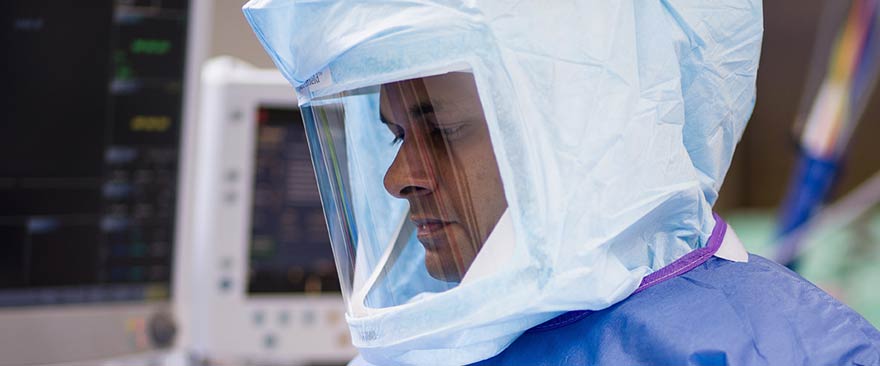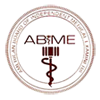Revision total hip replacement is surgery to correct problems relating to an earlier total hip replacement procedure (or in rare cases more than one).
The Australian National Joint Replacement Registry (AOA NJRR) lists the following as important reasons for Revision of a THR.
- Loosening of artificial hip components – where the artificial joint has been in place for a long time or has been subject to considerable wear and tear, it may wear and the components may become loose. Loosening is often a result of osteolysis.
- Osteolysis – this is where the bone deteriorates due to an immune response to small fragments of the plastic components which break off as part of normal wear and tear. The immune response attacks healthy sections of bone as well as the particles released, which can lead to instability in the artificial hip joint.
- Repeated dislocation of artificial joint.
- A fracture near the site of the artificial joint – called a peri-prosthetic fracture, this is often caused by a fall or other accident.
- Infection – where infection occurs within the artificial joint, the infection must be treated and existing components will need to be replaced.
Dr Sunil Reddy is an experienced Joint Replacement Surgeon. Dr Reddy is available to discuss treatment options for the problems arising from your hip replacement.

Revision hip surgery often involves osteotomy to extract the previous component and longer stems with distal fixation or fixation along the entire length of the stem.
Procedure
A revision total hip replacement is generally more complex than the first operation and is often associated with more bleeding and higher risk of complications than primary THR.
When revision is performed for infection it is often a 2 stage procedure – the first stage to remove the infected components and place an antibiotic-loaded spacer; the second stage to replace the spacer with a definitive new hip replacement.
After an incision is made (much like a standard hip replacement procedure, but generally a slightly larger incision is required), a normal revision procedure is a three stage process,
Stage 1 - Removal of existing artificial hip components
It is important that these components are removed with minimal damage to the remaining bone and surrounding tissue. If cement has been used to fix the components to the bone, then this must be removed, often with the aid of an ultrasonic machine that dissolves the existing cement.
Stage 2 - Bone graft/attachment of artificial bone 'augments'
If any bone has been lost this must be replaced either with a bone graft, generally using a section of the patient's own bone harvested from another bone in the body, or donor bone from a 'bone bank' or prosthesis with built-in metal supports.
Stage 3 - Fixing of the new artificial hip joint components
As with the normal Total Hip Replacement procedure this may or may not involve using cement to fix the components in the hip socket and thigh bone. Revision implants usually are longer than those used in primary THR and may involve more constraint at the bearing surface.
Postoperative Recovery and Rehabilitation
Please see the section on Total Hip Replacement for an overview of “Things you need to know” following a THR. Recovery and rehabilitation following a revision surgery is along the same lines, but may be more prolonged.







